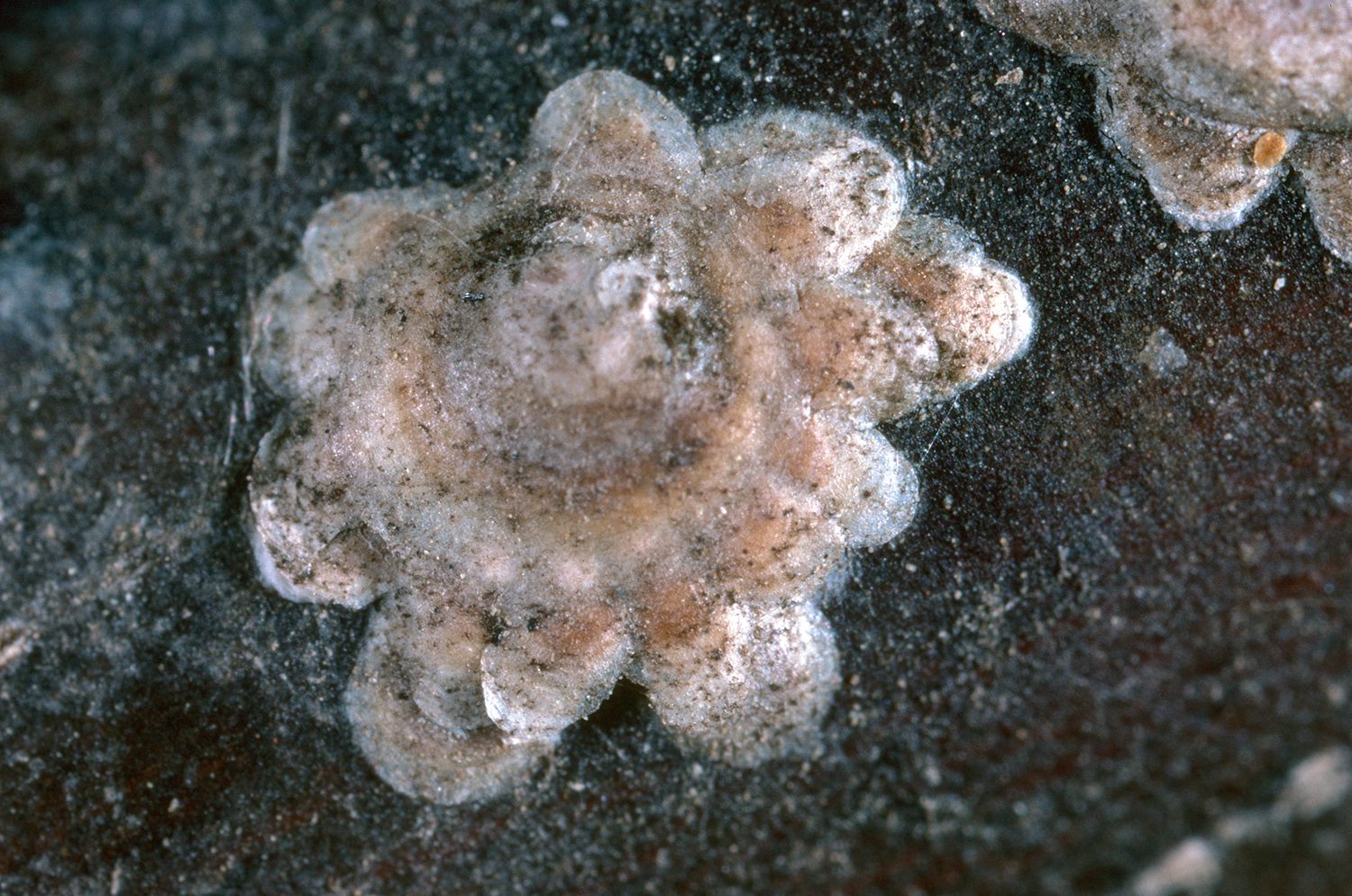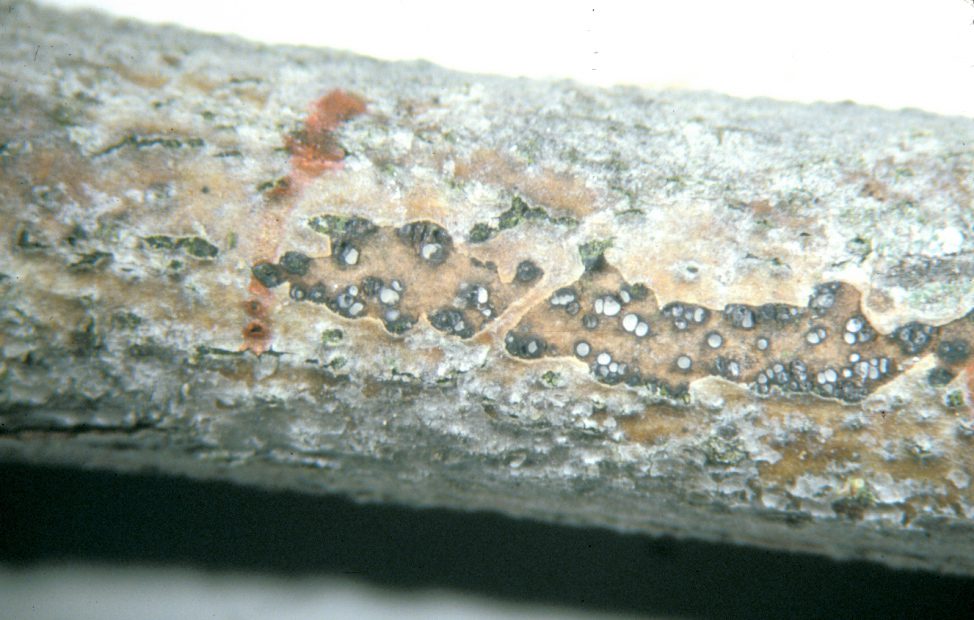
Walnut scale and Botryosphaeria (BOT) are not new issues in walnut production and separately can affect tree health.
Their interaction, with scale providing openings for the fungal invasion, is gaining attention.
UCCE Farm Advisor Elizabeth Fichtner reported that walnut scale feeding causes lesions on tree shoots and spurs. The lesions can open the site for BOT infection. Scale on a prior year’s growth may predispose new growth to disease. Walnut trees with scale infestations are 60% to 70% more prone to BOT infection, Fichtner wrote.
Walnut scale is an armored scale where the cover is separate from the body. Walnut scale has a daisy shaped outline when mature. In orchards with high scale populations, walnut scale can be found in crusted layers on older branches and scaffolds.
The UC IPM guidelines report that walnut scale nymphs overwinter in orchards and emerge as adults in the spring. Females remain under their covers where they lay eggs. Crawlers emerge from late April to mid-May, depending on growing region and temperatures.
Walnut scale infestations are not new in California walnut orchards, said Themis Michaillides, plant pathologist at the UC Kearney Research and Extension Center in Parlier. The concern is that walnut scale, if not controlled, may lead to higher rates of BOT infection in trees.

Michailides said that in the past where walnut scale was present on walnut trees, about 50% of the lesions inspected had signs of BOT infection. If the fungal disease becomes established, he said, it can kill shoots and spurs. Scale can be controlled in walnut orchards, he noted, but if there is a high level of BOT inoculum built (or accumulated) in an orchard, infection can occur.
Presently, the effect of walnut scale alone on yields is not known, but Michailides said even if BOT inoculum is not present, walnut scale can affect tree health. A high scale population can kill shoots, while it can take less time for a BOT infection to invade and kill shoots.
Fichtner noted that management of walnut scale can be achieved with broad spectrum insecticides or an insect growth regulator. The IGR products work by disrupting the scale’s molting process. When applied at the delayed dormant stage IGRs would have the opportunity to inhibit the maturation of the overwintering scale to the adult stage. When applied in late spring IGRs may impact egg hatch as well as the development of the first-generation nymphs.
Effective monitoring and decision-support can help determine the need to treat on a yearly basis. More information on monitoring can be found on the Sac Valley Orchards website:
(sacvalleyorchards.com/walnuts/insects-mites- walnuts/walnut-dormant-monitoring-and-treatment-decisions/).










